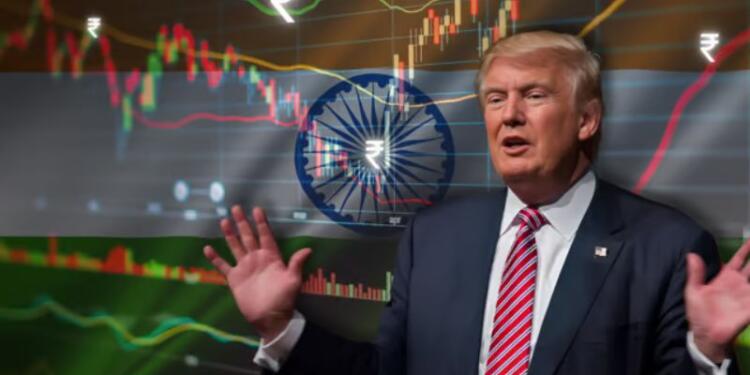Among the first Indian assessments of the impact of Donald Trump’s second term on India says the victory introduces a mix of challenges and opportunities for India. The report, prepared by the State Bank of India, says though “the potential for increased tariffs, H-1B restrictions, and a strong dollar could bring short-term volatility”, it also “presents India with long-term incentives to expand its manufacturing, diversify export markets, and enhance economic self-reliance”.
Titled: “The US Presidential Election 2024: How Trump 2.0 Impacts India’s and Global Economy”, the report was released on November 10. Its bottom line is that “long-term benefits (to India) outweigh the short-term volatility and impediments”.
The report said the 10-year yield shows no obvious trends, and the effect will be context-sensitive, going ahead. “USD/INR has shown range bound movement, and the rupee can have a brief spell of depreciation followed by appreciation…Volatility in Indian equity markets showing signs of reduction,” the study said.
The report emphasised that “the fear” that the rupee will depreciate sharply is unfounded. During the Trump 1.0, it said, the rupee depreciated by 11 percent, less than it depreciated during the Joe Biden term.
While a stronger dollar might result in short-term capital outflows for short-term as investors flock to dollar-based assets, on a positive note, a lower rupee might provide an export advantage, potentially boosting revenues in sectors like textiles, manufacturing, and agriculture, the report said. “Still, we expect a depreciation of 8-10 percent during Trump 2.0.”
It also noted that the depreciation of the rupee may increase the import cost of oil and other commodities. “As per our estimate, a 5 percent decline in rupee will increase inflation by 25-30 bps. So, the impact will be very less on inflation,” it said.
However, India, with its robust growth prospects, large consumer base, and government-backed initiatives, might remain attractive to sectors less impacted by trade tensions, such as renewable energy, digital services, and manufacturing, the report said.
On the FDI front, the report said the Trump 1.0 administration saw significant regulatory changes aimed at attracting investments back to the US, and this was reflected in data also.
“However, India is no longer dependent on the traditional sources of FDI inflows…unlike the recent past, FDI is now coming in many new sectors like non-conventional energy, sea transport, medical and surgical appliances, etc,” it said.
In recent years, Indian exporters have expanded their US market share, with the USA. being one of India’s top trading partners. India’s exports to the USA have witnessed a continuous rise. “A reduction in trade benefits or the imposition of tariffs could pressure profit margins, prompting Indian companies to explore alternative markets or invest more in domestic markets to offset US market risks. It is also likely that India can witness a rise in exports if the nation can reap the benefits of its comparative advantage.”
With regard to the defense sector, the SBI report said that a Trump administration, historically supportive of India’s defense aspirations, may strengthen these ties, particularly in the Indo-Pacific region. Continued defense collaboration could drive technology transfers, investments in defense manufacturing, and joint ventures, all of which could add value to India’s economy.
On opportunities under Trump 2.0, the report said it is likely that India will reap the benefits of its comparative advantage over China under Trump 2.0.
“Given the global supply chain relocation and Trump 2.0 sectors such as pharmaceuticals, textiles, and electronics are likely to gain.”
The report also offered its initial assessment of the impact on visas. It said if the Trump administration opts to limit work visas, particularly the H-1B visa program, the Indian IT sector may see increased costs. H-1B visa restrictions can lead to decreased labour mobility, affecting the hiring capabilities of Indian IT companies operating in the US.
This may result in Indian firms allocating resources towards hiring locally in the US at a higher cost, which could strain margins for companies. During Trump 1.0 the non-immigrant visas issued by the US largely stagnated around 10 lakh per year. However, in 2023, 14 lakh Indians received non-immigrant visas.
The bright side is that while Trump’s policies may pose challenges, they also offer India an opportunity to strengthen its own domestic manufacturing through its “Atmanirbhar Bharat” initiative. “We may look to accelerate reforms in domestic production, self-reliance, and inward investment,” the report opined.
In other words, the report said while tighter visa rules would likely increase costs for Indian IT firms in the US, they could also lead India to focus more on local manufacturing and economic independence.































